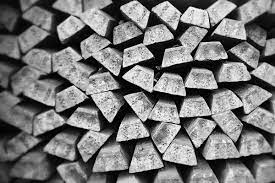NEW DELHI, Nov 28: With the introduction of norms for silver exchange traded funds (ETFs), investors will be able to invest in silver in a more liquid manner and can help in diversification of the portfolio, experts said on Sunday.
The Securities and Exchange Board of India (Sebi) came out with operating norms for silver ETF, whereby such scheme will have to invest at least 95 per cent in silver and silver-related instruments. The norms will be effective from December 9, 2021.
Currently, Indian mutual funds are allowed to launch ETFs tracking on gold.
“Now people will be able to hold silver commodity by investing into silver ETF. Since it is a highly regulated product, investors will be certain about its purity unlike when they buy silver from open market,” said Swapnil Bhaskar, Head of Strategy, Niyo– a neo-banking platform for millennials to invest.
Priti Rathi Gupta, Founder, LXME — financial platform for women — said “now investors will be able to invest in silver in a more liquid manner compared to the traditional methods of investing in silver”.
Also, this will help in diversification of the portfolio as silver has been a precious metal, after gold, she said.
“It will become very convenient for investors to have exposure to silver as a commodity in a transparent manner, in addition to their exposure to gold,” Hemen Bhatia, Deputy Head – ETF, Nippon Life India Asset Management Ltd, said.
Under the norms, silver ETF scheme will be benchmarked to the price of silver (based on London Bullion Market Association or LBMA silver daily spot-fixing price) and the net asset value (NAV) of such ETFs will be reported on a daily basis on the AMC’s website.
The move will give investors more realistic pricing of the precious metal.
These norms are in line with the existing regulatory mechanism for gold ETFs, as Sebi continues to follow the same practice of making AMCs own 99.9 per cent pure silver bars through the LBMA allowing retail investors to invest in silver ETFs without having to worry about purity, risk, storage and insurances, Gupta said.
“There is now uniformity in these product specifications. This makes investing in silver easier, accessible, and transparent for investors, who will benefit from professional fund management,” she added.
While LBMA silver daily spot fixing price has been chosen as the benchmark for silver ETFs, the same has not been stipulated for the valuation of the fund’s assets where the ask is to ascertain the fair market value which would largely be price operational in the domestic physical markets, Chirag Mehta, Senior Fund Manager-Alternative Investments, Quantum Mutual Fund, said.
“Many times there is a disparity between the LBMA equivalent Indian rupee denominated silver prices and domestic prices of silver in Indian markets. This differential might result in higher tracking error which is nothing but an anomaly in comparison. Silver prices for both benchmark and valuation should be aligned,” he added.
With regard to indicative NAVs of silver ETFs, Mehta said NAVs that need to be disclosed on stock exchange platforms on continuous basis during the trading hours are better provided to the exchanges by independent third party agencies appointed by the fund instead of the fund houses.
A similar framework is followed in other markets like the US as well where this is prevalent. The Indian ecosystem currently lacks presence of such entities, he added.
The regulator has proposed the appointment of a dedicated fund manager for commodity-based funds like gold ETFs and silver ETFs. “We believe that since these products are passively managed there isn’t a need for a dedicated fund manager or to put it aptly the list of funds should not be restrictive to commodity funds only for that fund manager,” Mehta said.
“However, we do buy the argument that such fund manager should have adequate knowledge and understanding of the commodity markets,” he added. (PTI)
Trending Now
E-Paper


